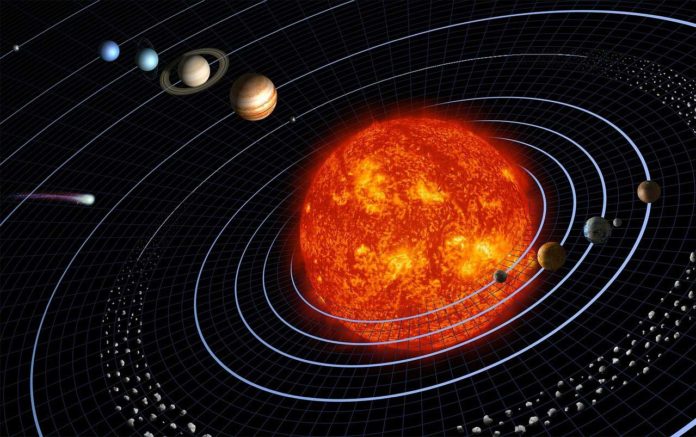Which planet is closest to the Earth? The answer is not Venus.
Until now, we have read in our science books, or even if searching on Google, the answer suggests that Venus is the closest neighbor to Earth. But now, scientists have made shocking revelations suggesting that Mercury is the closest planet to the Earth.
Presenting their outcomes in the magazine Physics Today, scientists from NASA, Los Alamos National Lab, and the U.S. Army proposed a new model of the planets’ orbit that shuffles things around, calculating that Earth’s closest neighbor, on average, is Mercury. It says that every other planet in the solar system’s nearest neighbor is Mercury.
Normally, we calculate the average distance from the planet to the Sun. The Earth’s average distance is one astronomical unit (AU), while Venus’ is around 0.72 AU. If you subtract one from the other, you calculate the average distance from Earth to Venus as 0.28 AU, the smallest distance for any pair of planets.
However, a trio of scientists realized that this isn’t an accurate way to calculate the distances to planets. After all, Earth spends just as much time on the opposite side of its orbit from Venus, placing it 1.72 AU away. One must instead average the distance between every point along one planet’s orbit and every point along the other planet’s orbit.
The scientists ran a simulation based on two assumptions: that the planets’ orbits were approximately circular and that their orbits weren’t at an angle relative to one another.
In the commentary, the researchers devised a new mathematical technique, called the point-circle method, to measure the distances between planets. This method averages the distance between a bunch of points on each planet’s orbit, taking time into consideration.
When measured that way, Mercury was closest to Earth most of the time. Not only that, but Mercury was also the closest planet to Saturn and Neptune, and all of the other planets. The researchers checked their findings by mapping out where the planets were in their orbits every 24 hours for 10,000 years.
Steven Beckwith, the director of the Space Science Laboratory and professor of astronomy at UC Berkeley, who was not part of the commentary, said, “Suppose you live in a house where the people who live next door to you spend half the year someplace, maybe you live in Wisconsin and your nearest neighbors spend seven months of the long winters in Florida. During the winter, the people in the next house over would be closer to you.”
Journal Reference
- Tom Stockman, Gabriel Monroe, and Samuel Cordner. Venus is not Earth’s closest neighbor. Physics Today. DOI: 10.1063/PT.6.3.20190312a
